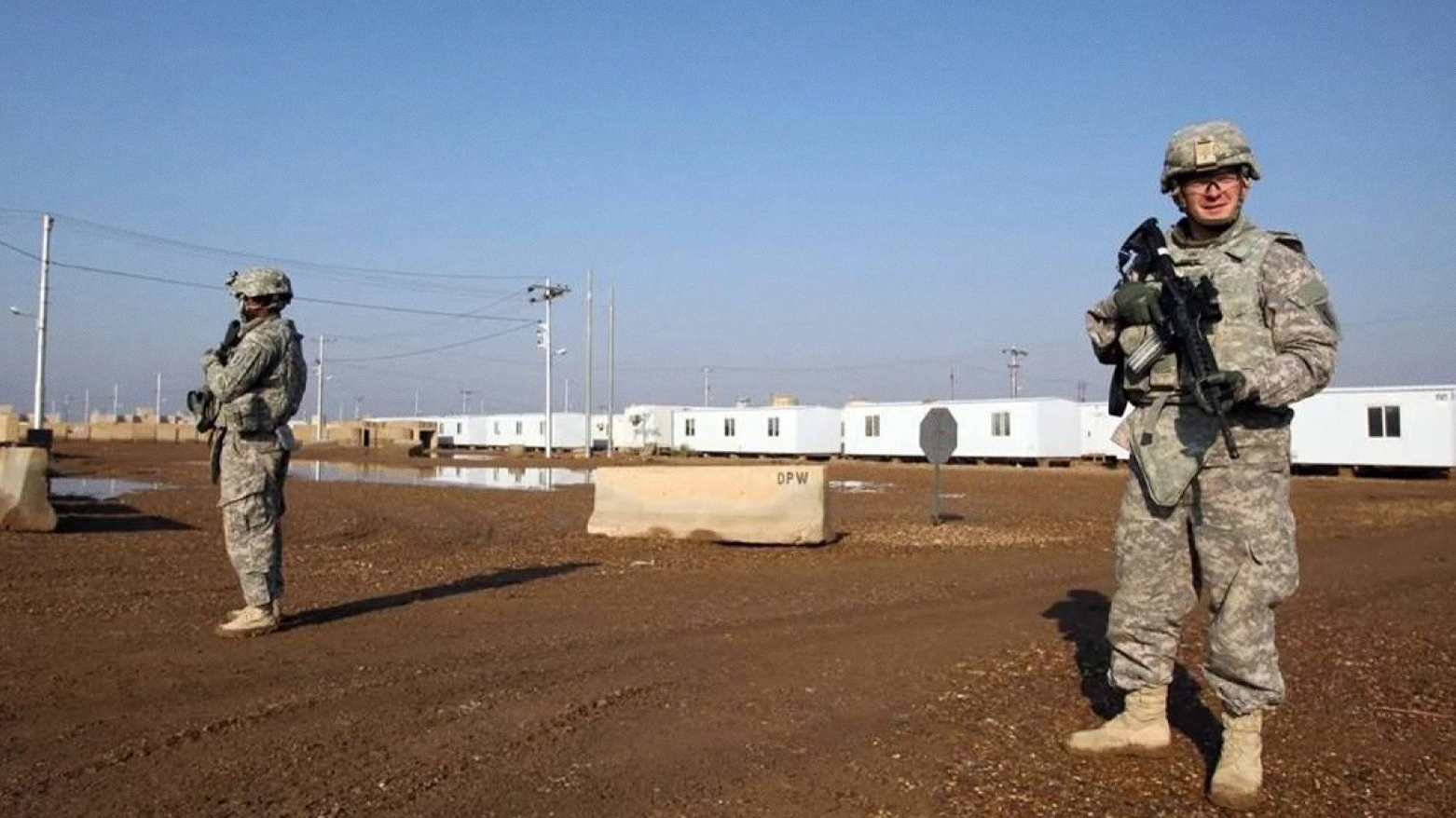Iranian-Backed Militia Launches Drone Attack on US Forces in Iraq
Iran has been exploiting the war between Israel and Hamas in the Gaza strip to mobilize its proxies throughout the region, including in Lebanon, Yemen, and Iraq.

WASHINGTON DC, United States (Kurdistan 24) – On Tuesday, two armed drones targeted Iraq’s Ain al-Asad airbase which hosts U.S. forces. The drones, however, did no damage.
One drone was shot down, before it could reach the base. The other exploded inside the base, but did so “without causing any injuries or damage,” as an Iraqi police source told Agence France Presse.
Ain al-Assad is located in western al-Anbar province. The area is predominantly Sunni Arab, and the U.S. forces there are in Iraq to fight the Sunni terrorist group, ISIS.
Iranian-backed Shi’ite militias, the self-styled, “Islamic Axis of Resistance,” are, nonetheless, thought to have been behind the attack.
Iran has been exploiting the war between Israel and Hamas in the Gaza strip to mobilize its proxies throughout the region, including in Lebanon, Yemen, and Iraq.
Attacks on international shipping in the Red Sea by the Yemen-based Houthis continue unabated, while the last such attack by the Shi’ite militias in Iraq occurred in April.
Then, rockets were fired from Iraqi territory at the Kharab al-Jir base in northeast Syria. That base hosts U.S. forces fighting against ISIS in coordination with their local partner, the Kurdish-led Syrian Democratic Forces (SDF.)
Those rockets also fell harmlessly in the desert sand, causing no damage.
However, the previous militia attack, on Jan. 28, targeted U.S. forces based in Jordan at Tower 22. It is located just across the border from al-Tanf, a U.S. base in northeast Syria, and the attack killed three U.S. troops and wounded another 30.
That attack followed a large number of assaults on U.S. forces in Iraq and Syria, since October 7, when Hamas launched its large-scale, highly lethal cross-border assault on Israel. But none had caused serious casualties, so there was no meaningful response from the Biden administration..
However, the lethal strike in Jordan finally prompted it to act. On Feb. 3, over a very brief period—just 30 minutes—U.S. aircraft bombed 85 targets at seven locations. Three of them were in Iraq and four were in Syria.
The strikes involved B-1 long-range heavy bombers, which flew to their targets all the way from the U.S, as well as locally-based CENTCOM aircraft.
It was a small demonstration of the power of the U.S. military and what it could do to the Iranian-backed forces. And it was effective.
John Kirby, National Security Council Coordinator for Strategic Communications, explained the administration’s purpose.
“We want the attacks [on U.S. forces] to stop,” he said. “We want them to stop right now.”
Read More: U.S. Says Attacks ‘Must Stop Right Now,’ as it Strikes IRGC, Militias in Iraq, Syria
And that did happen. The attacks stopped, although two months later, on April 22, there was another attack targeting U.S. forces in Syria, as described above.
Asked about the attack, State Department Spokesperson Matthew Miller attributed it to Iran.
“We find it especially troubling that this militia group chose to resume its attacks against U.S. personnel just hours after Prime Minister Sudani of Iraq had completed a successful visit to Washington,” he said.
Miller then warned, “We have made quite clear to Iran, we’ve made quite clear to Iran’s proxy groups that we will defend our interests, we will defend our personnel, and that continues to be the case.”
Although there was no U.S. military response to that attack, the pro-Iranian militias launched no further assaults until Tuesday.
